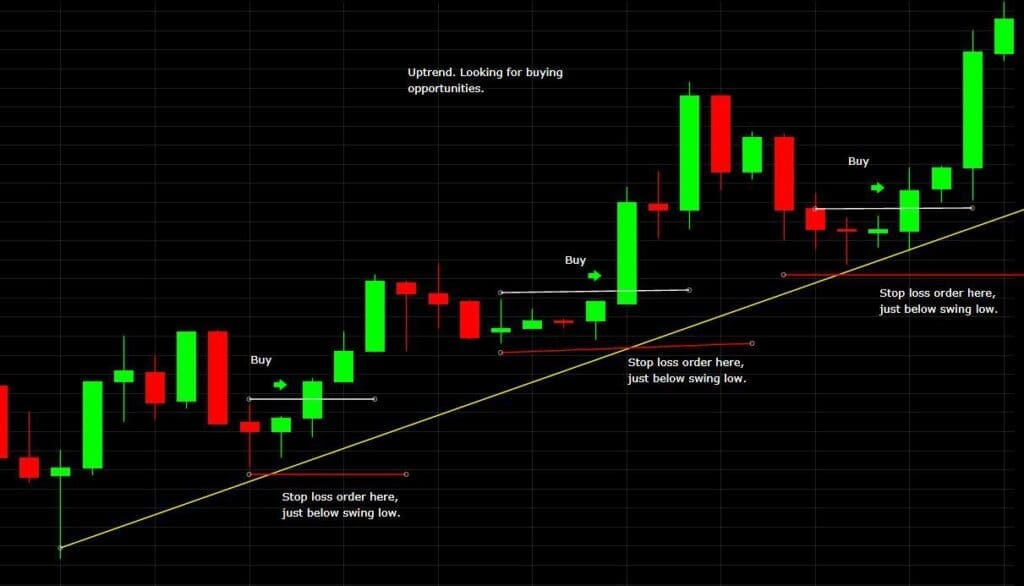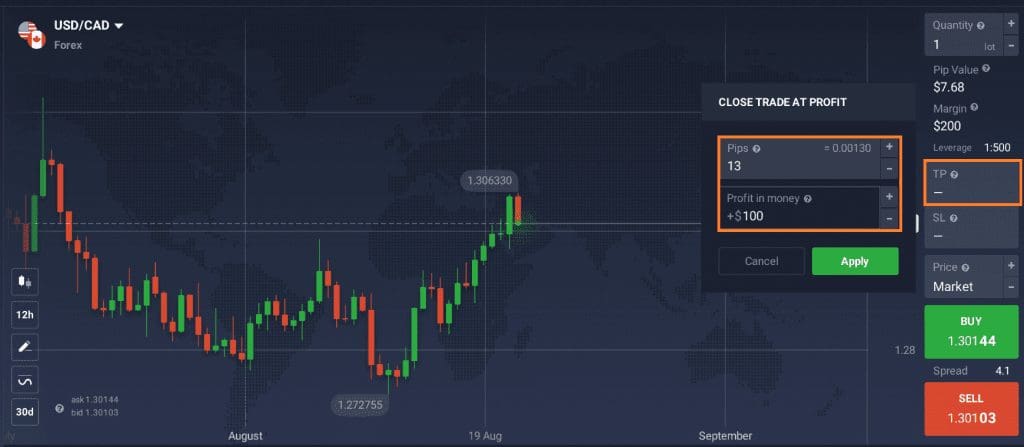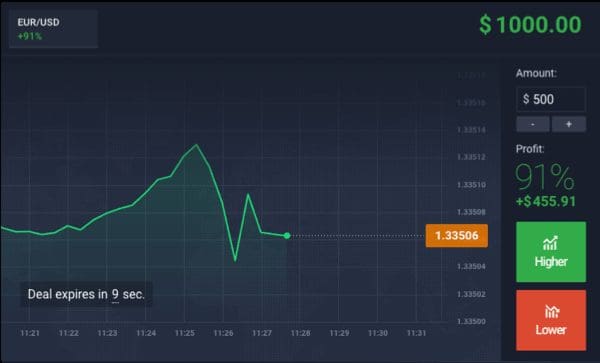Emir türleri, yatırımcıların hisse senetleri, tahviller, emtialar ve diğer finansal enstrümanları alım veya satım işlemleri sırasında kullanabilecekleri çeşitli talimatların türlerini ifade eder. Bu emir türleri, işlem yaparken belirli koşulların ve parametrelerin nasıl uygulanacağını belirler ve yatırımcının işlem stratejisini yürütmesine yardımcı olur. Finansta emir türlerini anlamak, bir yatırımcının riski azaltmasına, karını maksimize etmesine ve işlem stratejilerini etkili bir şekilde uygulamasına yardımcı olan kritik bir konudur.
Emir Türlerinin Önemi
- Risk Yönetimi: Emir türleri, yatırımcıların riski yönetmelerine yardımcı olur. Örneğin, zarar durdurma emirleri, yatırımcının maksimum zararını sınırlar ve ani fiyat dalgalanmalarının olumsuz etkilerini azaltır.
- Kar Maksimizasyonu: Emir türleri, yatırımcıların karlarını artırmalarına yardımcı olabilir. Kar al emirleri, yatırımcının karını otomatik olarak realize etmesine yardımcı olur.
- Duygusal Kontrol: Emir türleri, duygusal tepkilerden kaynaklanan kötü kararların önlenmesine yardımcı olabilir. Özellikle ani piyasa hareketlerinde, otomatik emirler duygusal kararlar yerine mantıklı ve önceden belirlenmiş stratejilere dayalı işlem yapmayı sağlar.
- İşlem Hızı: Hızlı işlem yapma gerekliliği olan yatırımcılar için, emir türleri işlem hızını artırabilir. Piyasa emirleri, anlık gerçekleşmesi gereken işlemlerde kullanılırken, limit emirleri belirli bir fiyat seviyesinde işlem yapılmasını sağlar.
Alakalı;
Piyasa Emri
Bir finansal enstrümanın (örneğin, bir hisse senedi veya döviz çifti) anlık piyasa fiyatından anında alım veya satımını ifade eder. Bir piyasa emri verdiğinizde, emriniz hemen işleme alınır ve mevcut piyasa fiyatından gerçekleşir.
“Dolar/TL paritesinde işlem yapmak istiyorsanız, piyasa emri vererek anlık döviz alım veya satım işlemi gerçekleştirebilirsiniz. Örneğin, anlık piyasa fiyatı 30 TL ise ve 1000 dolar almak istiyorsanız, 30.000 TL ödersiniz.”
Avantajlar:
- Hızlı İşlem: Piyasa emirleri, hızlı bir şekilde işlem yapma gereksinimi olan yatırımcılar için uygundur, çünkü işlem fiyatı mevcut piyasa fiyatından gerçekleşir.
- İşlem Garantisi: Piyasa emirleri, emir verildiğinde kesinlikle gerçekleşir, bu nedenle likidite sıkıntısı yaşanmayacak ve emir gerçekleşmeyeceği endişesi olmayacaktır.
Dezavantajlar:
- Fiyat Belirsizliği: Piyasa emri verildiğinde, işlem fiyatı belirli bir seviyede garantilenmez. Bu nedenle, ani fiyat dalgalanmaları nedeniyle beklenmedik fiyat değişiklikleri olabilir.
- Spread Etkisi: Mevcut alış ve satış fiyatları arasındaki spread, piyasa emri verenler için maliyet unsuru olabilir. Satış fiyatı, alış fiyatından her zaman bir miktar daha düşüktür.

Limit Emri
Belirli bir fiyattan bir finansal enstrümanın alım veya satımını yapmayı amaçlayan bir emirdir. Limit emri, yatırımcının belirlediği belirli bir fiyat seviyesine ulaşıldığında işlem yapılmasını sağlar. İşte bir limit emri örneği:
- Satış Limit Emri: Bir hisse senedi için 50 TL fiyatından satış limit emri veriyorsunuz. Bu durumda, eğer ilgili hisse senedinin fiyatı 50 TL’ye ulaşır veya bu fiyatı aşarsa, emir otomatik olarak gerçekleşir ve hisse senedi satılır.
- Alım Limit Emri: Bir döviz çifti için 7.00 TL fiyatından alım limit emri veriyorsunuz. Eğer döviz çiftinin fiyatı 7.00 TL’ye düşer veya bu fiyatın altına inerse, emir otomatik olarak gerçekleşir ve döviz çifti alınır.
Limit emirleri, yatırımcıların piyasa hareketlerini daha yakından takip etmelerine ve belirli bir fiyat seviyesine ulaşıldığında otomatik olarak işlem yapmalarına olanak tanır. Bu emir türü, yatırımcıların fiyat seviyelerini önceden belirleyerek daha kontrollü işlem yapmalarına yardımcı olabilir.
Avantajlar:
- Fiyat Kontrolü: Limit emirleri, yatırımcılara işlem fiyatını kontrol etme imkanı sunar. Bu nedenle, istenilen fiyat seviyesinde işlem yapma yeteneği vardır.
- Maliyet Kontrolü: Spread maliyetini minimize etmek için kullanılabilir, çünkü işlem fiyatı belirli bir seviyeye ulaşmadan işlem gerçekleşmez.
Dezavantajlar:
- İşlem Garantisi Yok: Limit emirleri belirtilen fiyat seviyesine ulaşmayabilir ve bu durumda işlem gerçekleşmeyebilir.
- Hızlı Hareket Eden Piyasalarda Sorun: Hızlı fiyat dalgalanmalarının olduğu piyasalarda limit emirleri yerine piyasa emirleri tercih edilmelidir.
Stop-Loss Emri
Yatırımcının bir varlık (örneğin, hisse senedi veya döviz çifti) için belirlediği bir zarar sınırına ulaşıldığında otomatik olarak satış işlemi gerçekleşmesini amaçlayan bir emirdir. Bu tür bir emir, yatırımcının potansiyel zararlarını sınırlamak ve risk yönetimi yapmak için kullanılır.
Diyelim ki bir yatırımcı ABC Şirketi’nin hisse senedini 100 TL fiyatından satın aldı. Ancak yatırımcı, hisse senedinin değer kaybedebileceğinden endişe ediyor. Bu nedenle, riskini sınırlamak için bir stop-loss emri veriyor ve bu emri 90 TL olarak belirliyor.
Bu durumda, hisse senedi fiyatı 100 TL’den 90 TL’ye düşerse, stop-loss emri otomatik olarak devreye girer ve hisse senedi 90 TL’den satılır. Bu, yatırımcının daha fazla zarar etmesini önlemeye yardımcı olur.
Stop-loss emri, yatırımcıların risklerini kontrol etmelerine ve duygusal kararlar almadan zararlarını sınırlamalarına yardımcı olabilir. Ancak unutulmaması gereken önemli bir nokta, stop-loss emrinin belirlenen seviyeye ulaşması durumunda otomatik olarak işlem yapacak olmasıdır.
pozisyonunu otomatik olarak kapatmayı amaçladığı emirlerdir.
Avantajlar:
- Zarar Sınırlama: Stop emirleri, yatırımcının maksimum zararını sınırlamak için kullanılabilir. Fiyat belirli bir seviyeye düştüğünde pozisyon otomatik olarak kapanır.
- Kar Koruma: Kar elde edilen pozisyonlar için kullanılabilir ve belirli bir kar seviyesine ulaşıldığında pozisyonu kapatmayı sağlar.
Dezavantajlar:
- Dalgalı Piyasalarda Sorun: Dalgalı piyasalarda fiyatlar hızla değişebilir ve stop emirleri beklenen fiyat seviyesine ulaşmadan tetiklenebilir, bu da istenmeyen işlemlere yol açabilir.
- Slippage Sorunu: Stop emirleri, belirtilen fiyat seviyesine ulaşıldığında tetiklendiğinde, işlem fiyatının beklenenden farklı olmasına neden olabilir, bu da slippage olarak adlandırılır.

Kar Al Emri
Yatırımcının bir varlık (örneğin, hisse senedi veya döviz çifti) için belirlediği kar seviyesine ulaşıldığında otomatik olarak satış işlemi gerçekleşmesini amaçlayan bir emirdir. Bu tür bir emir, yatırımcının karlarını realize etmek ve potansiyel kazançlarını korumak için kullanılır.
Diyelim ki bir yatırımcı XYZ Şirketi’nin hisse senedini 50 TL fiyatından satın aldı. Yatırımcı, hisse senedinin değer kazanabileceğini düşünüyor ve belirli bir kar seviyesine ulaşıldığında kar almak istiyor. Bu nedenle, yatırımcı bir kar al emri veriyor ve bu emri 60 TL olarak belirliyor.
Eğer hisse senedi fiyatı 50 TL’den 60 TL’ye yükselirse, kar al emri otomatik olarak devreye girer ve hisse senedi 60 TL’den satılır. Bu, yatırımcının belirlediği kar seviyesine ulaştığında karlarını realize etmesini sağlar.
Kar al emri, yatırımcıların karlarını korumalarına ve duygusal kararlar almadan karlarını realize etmelerine yardımcı olabilir. Bu emir türü, yatırımcının kazançlarını sabitlemesine ve potansiyel kayıpları azaltmasına olanak tanır.
Avantajlar
- Kar Garantisi: Kar al emirleri, yatırımcılara belirli bir kar seviyesine ulaşıldığında pozisyonlarını otomatik olarak kapatma imkanı sağlar. Bu, kar elde eden pozisyonların beklenmedik fiyat değişimlerine karşı korunmasını sağlar.
- Duygusal Kararları Azaltır: Kar al emirleri, yatırımcıların duygusal tepkilerden kaynaklanan kötü kararlar verme riskini azaltır. Belli bir kar hedefi belirlemek, duygusal kararlar yerine mantıklı stratejilere dayalı işlem yapmayı teşvik eder.
Dezavantajlar
- Fiyat Düzeltmeleri Kaçırma Riski: Kar al emirleri, fiyatın belirli bir seviyeye ulaşmasını beklerken piyasa düzeltilirse karı kaçırma riskini taşır. Fiyat hedefine ulaşmadan önce geri dönebilir ve emir tetiklenmeyebilir.
- Düşük Likidite Durumunda Sorun: Düşük likiditeye sahip piyasalarda veya belirli varlıklarda, kar al emirleri işe yaramayabilir. Fiyat seviyesine ulaşacak kadar alıcı veya satıcı olmayabilir.

İzleme Emri
Yatırımcının belirli bir finansal enstrümanı (örneğin, bir hisse senedi veya döviz çifti) dikkatle takip etmek veya belirli bir fiyat seviyesine ulaştığında işlem yapmak amacıyla piyasa izleme listesine eklemesini ifade eder.
Örneğin, bir yatırımcı ABC Şirketi’nin hisse senedini izlemek istiyor ve bu hisse senedinin fiyatı 60 TL’ye düştüğünde alım yapmayı düşünüyor. Bu nedenle, yatırımcı hisse senedini izleme listesine ekler ve 60 TL fiyatını bekler.
İzleme emri, yatırımcının piyasa koşullarını dikkatle takip etmesini sağlar ve belirli bir işlem seviyesine ulaşıldığında hızlı bir şekilde hareket etmesine yardımcı olabilir. Bu emir türü, yatırımcının belirli bir fiyat seviyesine veya olaya odaklanmasını ve gerekli işlemi zamanında yapmasını kolaylaştırır.
Avantajlar
- Otomatik İşlem Yapma İmkanı: İzleme emirleri, belirli bir fiyat seviyesine veya koşula ulaşıldığında otomatik olarak işlem yapma imkanı sunar. Bu, yatırımcının piyasa takibini sürekli yapma ihtiyacını azaltır ve fırsatları kaçırma riskini azaltır.
- Fiyat Seviyesine Göre İşlem Yapma: İzleme emirleri, belirli bir fiyat seviyesine ulaşıldığında işlem yapmayı amaçlar. Bu, yatırımcının istediği fiyat seviyelerine giriş veya çıkış yapma yeteneği sunar.
Dezavantajlar
- Fiyat Dalgalanmaları: Piyasa hızla dalgalanırken veya fiyatlar ani değişiklikler gösterirken, izleme emirleri beklenen fiyat seviyesine ulaşmadan tetiklenebilir. Bu, istenmeyen işlemlere neden olabilir.
- Ekstra Komisyon Ücretleri: İzleme emirleri, daha fazla işlem yapılmasına yol açabilir ve bu da ekstra komisyon ücretlerini artırabilir. Fiyat seviyesine ulaşıldığında birkaç emir tetiklenebilir.
İkili Opsiyon Emri
Yatırımcının bir finansal enstrümanın (örneğin, hisse senedi, döviz çifti veya emtia) fiyatının belirli bir zaman diliminde yükseleceğine veya düşeceğine yönelik tahminlerine dayalı olarak yapılan bir tür bahistir.
İkili opsiyon emrinde yatırımcı, bir varlığın fiyatının belirli bir süre içinde yükseleceğini düşünüyorsa “çağrı” (call) opsiyonunu satın alır. Eğer fiyat yükselirse, yatırımcı kâr elde eder; ancak fiyat düşerse, yatırımcı kaybeder.
Eğer yatırımcı bir varlığın fiyatının belirli bir süre içinde düşeceğine inanıyorsa “koyma” (put) opsiyonunu satın alır. Bu durumda, eğer fiyat düşerse, yatırımcı kâr elde eder; ancak fiyat yükselirse, yatırımcı kaybeder.
İkili opsiyonlar, belirli bir süre sonunda yatırımcının doğru tahmin yapması durumunda sabit bir ödeme almasını sağlar. Ancak yanlış tahmin durumunda yatırılan paranın kaybedilmesi riski vardır. Bu nedenle ikili opsiyonlar yüksek risk içerir ve yatırımcıların dikkatli olmaları gerekir.
Bazı ülkelerde ikili opsiyonlar yasaklanmış veya düzenlenmiştir, bu nedenle yatırımcılar bu tür ürünleri kullanmadan önce yerel düzenlemelere dikkat etmelidir.

Avantajları
- Basit ve Anlaşılır: İkili opsiyon emirleri, basit ve anlaşılır bir şekilde çalışır. Yatırımcılar, belirli bir varlığın fiyatının belirli bir zaman diliminde yükseleceğine veya düşeceğine dair tahminde bulunurlar.
- Sabit Kazanç veya Kayıp: İkili opsiyonlarla işlem yaparken, yatırımcılar kazanç ve kayıplarını önceden bilirler. Kazanç veya kayıp, opsiyonun başlangıçta belirtilen oranına göre sabittir.
Dezavantajlar
- Sınırlı Karar Yetkisi: İkili opsiyon emirleri, yatırımcılara sadece belirli bir varlığın fiyatının belirli bir zaman diliminde yükseleceğini veya düşeceğini tahmin etme yetkisi verir. Diğer faktörler ve detaylı analizler dikkate alınmaz.
- Risk Yüksekliği: İkili opsiyonlarla işlem yaparken, yatırımcılar kaybetme riskini taşır. Kazanç veya kayıp, opsiyonun başlangıçta belirtilen oranına göre belirlenir ve kazanç şansı sınırlıdır.
- Düzenlemeler ve Güvenilirlik Sorunları: İkili opsiyonlarla işlem yaparken, güvenilir bir aracı kurum seçmek önemlidir. Bazı bölgelerde düzenlemeler eksik olabilir ve sahtekârlık riski yüksek olabilir. Bu nedenle, dikkatli bir şekilde aracı kurum seçimi yapılmalıdır.
Anahtar Noktalar
- Finansta Emir Türleri: Finansal piyasalarda kullanılan emir türleri, yatırımcıların alım ve satım işlemlerini nasıl yapacaklarını belirler.
- Piyasa Emirleri: Piyasa emirleri, mevcut piyasa fiyatından anlık alım veya satım yapma emirleridir. Hızlı işlem gereken durumlarda kullanışlıdır, ancak fiyat belirsizliği ve spread maliyeti dezavantajları vardır.
- Limit Emirleri: Limit emirleri, belirli bir fiyat seviyesinde alım veya satım yapılmasını amaçlar. Fiyat kontrolü sağlar, ancak işlem garantisi yoktur ve fiyat seviyesine ulaşması gerekir.
- Stop Emirleri: Stop emirleri, belirli bir zarar veya fiyat seviyesine ulaşıldığında pozisyonu otomatik olarak kapatmayı amaçlar. Zararı sınırlama ve kar koruma sağlar, ancak dalgalı piyasalarda risk taşır.
- Örnekler: İlgili durumlarda örnekler verilerek emir türlerinin nasıl kullanılacağı açıklandı.






